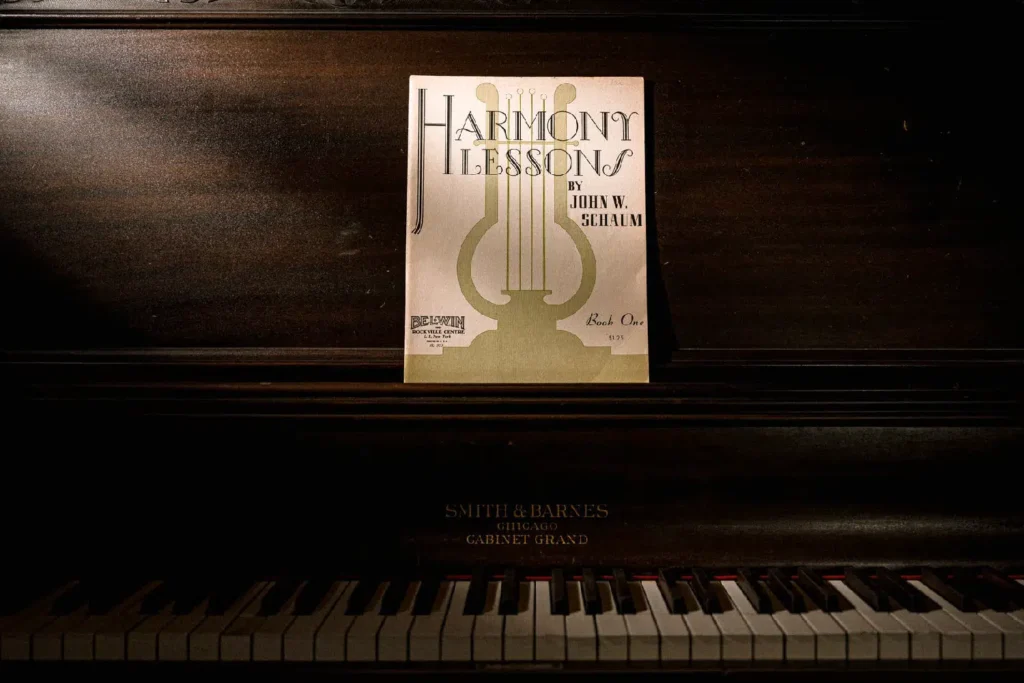Introduction:
Musical scales are the foundational building blocks of melody and harmony, providing a framework for organizing and understanding musical pitch relationships. From ancient civilizations to contemporary music theory, scales have played a central role in shaping musical compositions across diverse cultures and genres. In this article, we explore various types of musical scales, their unique characteristics, and their significance in music theory and practice.

Major Scale:
The major scale is one of the most fundamental and widely recognized scales in Western music. Characterized by a sequence of whole steps and half steps arranged in a specific pattern: W-W-H-W-W-W-H (where W represents a whole step and H represents a half step), the major scale consists of seven notes. Its bright, uplifting quality has earned it renown, making it a staple in classical, pop, jazz, and other musical genres.
Natural Minor Scale:
The natural minor scale derives from the major scale and features a different arrangement of whole steps and half steps: W-H-W-W-H-W-W. The natural minor scale has a melancholy or introspective quality compared to the major scale, making it suitable for expressing somber or reflective moods in music. It is commonly used in classical, jazz, and popular music compositions.
Harmonic Minor Scale:
The harmonic minor scale is similar to the natural minor scale but features a raised seventh degree, creating a distinctive interval of an augmented second between the sixth and seventh degrees. This alteration enhances the sense of tension and provides a stronger resolution to the tonic chord. The harmonic minor scale is commonly used in classical, folk, and world music traditions, as well as in jazz improvisation.
Melodic Minor Scale:
In the ascending form, the melodic minor scale features a raised sixth and seventh degree, while the descending form mirrors the natural minor scale. This unique construction allows for smoother melodic movement and avoids the augmented second interval found in the harmonic minor scale. Musicians frequently use the melodic minor scale in classical, jazz, and contemporary music contexts.
Pentatonic Scale:
The pentatonic scale comprises five notes per octave and demonstrates its simplicity and versatility. It forms by omitting the fourth and seventh degrees of the major scale. This results in a series of whole steps and minor thirds. The pentatonic scale is prevalent in various musical traditions worldwide, including folk music, blues, rock, and jazz. This scale is also valued for its melodic accessibility and improvisational potential.
Blues Scale:
The blues scale is a variation of the pentatonic scale that incorporates an additional “blue note,” typically a lowered fifth degree. This evokes the expressive qualities of blues music. Musicians characterize the blues scale by its soulful, emotive sound, which also serves as a foundational element in blues, jazz, and rock music improvisation.
Chromatic Scale:
The chromatic scale consists of all twelve pitches within an octave. This is including all the white and black keys on the piano keyboard. Characterized by a series of half steps, the chromatic scale offers maximum chromatic density and flexibility. Musicians often use it for chromatic passages, chromaticism, and also modulation in various styles of music. These styles include classical, jazz, and also contemporary compositions.
Whole-Tone Scale:
The whole-tone scale is constructed entirely of whole steps, resulting in a symmetrical scale with six unique pitches per octave. This uniform intervallic structure creates a sense of ambiguity and instability, while making it ideal for evoking dreamlike or surrealistic qualities in music. Musicians commonly use the whole-tone scale in impressionist music, jazz, and also avant-garde compositions.
Octatonic Scale (Diminished Scale):
The octatonic scale, also known as the diminished scale, alternates between whole steps and half steps in a symmetrical pattern. The scale consists of eight pitches per octave and are characterized by their distinctive harmonic tension and ambiguity. The octatonic scale is prevalent in jazz improvisation, as well as in compositions by composers such as Stravinsky, Bartók, and Schoenberg.
Arabian (Maqam) Scale:
The Arabian scale, also known as the Maqam scale, is used in Middle Eastern and Arabic music traditions. It encompasses various modes and scales characterized by microtonal intervals, melodic ornamentation, and also rhythmic patterns. The Maqam scale system is highly complex and diverse, reflecting the rich cultural heritage and artistic expressions of the region.
Indian (Raga) Scale:
In Indian classical music, the Indian scale, known as Raga, serves as a melodic framework characterized by specific rules and conventions governing pitch, ornamentation, and mood. Ragas are often also associated with different times of day, seasons, and emotional states. This scale provides a rich tapestry of melodic expression and improvisation in Indian classical music.
Gamelan Scale:
The Gamelan scale is used in traditional Javanese and Balinese gamelan music of Indonesia. It features unique tuning systems based on specific intervals and also pitch relationships. This resulting in rich harmonic textures and intricate rhythmic patterns. Gamelan scales vary between different ensembles and styles, while reflecting regional traditions and cultural influences.
Bluesy Diminished Scale:
The bluesy diminished scale, also known as the diminished blues scale or diminished whole-tone scale, combines elements of the blues scale and the diminished scale. It features a combination of whole steps, half steps, and augmented seconds, resulting in a distinctively bluesy and also exotic sound. Bluesy diminished scales are frequently used in jazz and blues improvisation, while providing musicians with a rich palette of expressive possibilities.
Conclusion:
Musical scales form the structural foundation of melody, harmony, and composition by providing musicians with a framework for creating and interpreting music. By understanding the characteristics and also applications of different types of scales, musicians can expand their creative palette. Enriching their musical vocabulary, and also explore a diverse range of expressive possibilities in their compositions and performances. Whether in classical, jazz, folk, or contemporary music contexts, scales continue to inspire and captivate audiences with their timeless beauty and inherent musicality.
More About Our Vocal Coaches
We understand that transitioning is often difficult and undeniably stressful for many people. While Dysphoria affects everyone differently, having an affirming voice that feels right for you can be a major factor in managing dysphoria.
Our vocal coaches help you find your voice by:

Dependable
⸺ & ⸺
Diligent
Having an advanced contact and booking platform to be sure that Your Lessons Now is always there for you, and our admin staff will always be here to help.

Helpful
⸺ & ⸺
Human
Providing a human touch to your scheduling and inquiries, our vocal coaches and also our admin team will assist you every step of the way.

Loud
⸺ & ⸺
Proud
Understanding the importance of providing a judgment-free and empathetic and caring environment, since many of us are LGBTQIA+ ourselves.

Secure
⸺ & ⸺
Respected
Our vocal coaches have extensive training, experience, degrees, and awards to further ensure the best learning environment for our students.